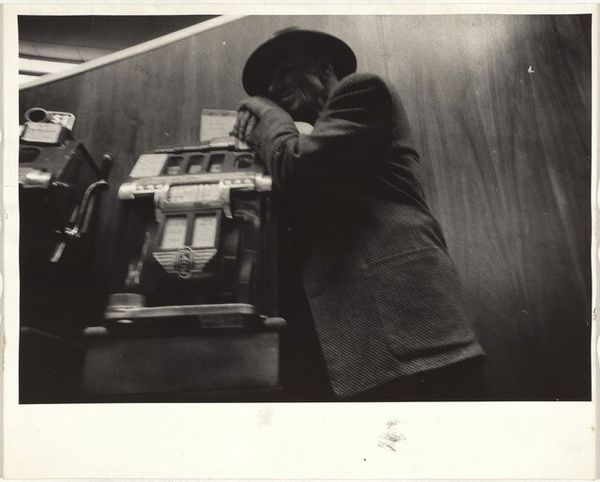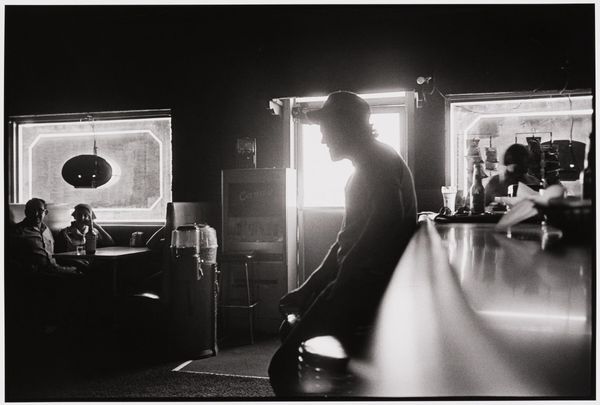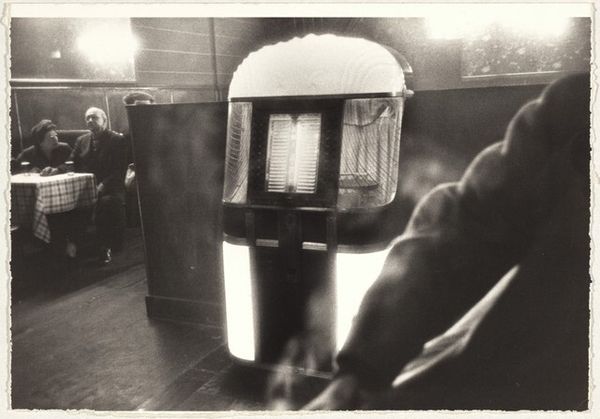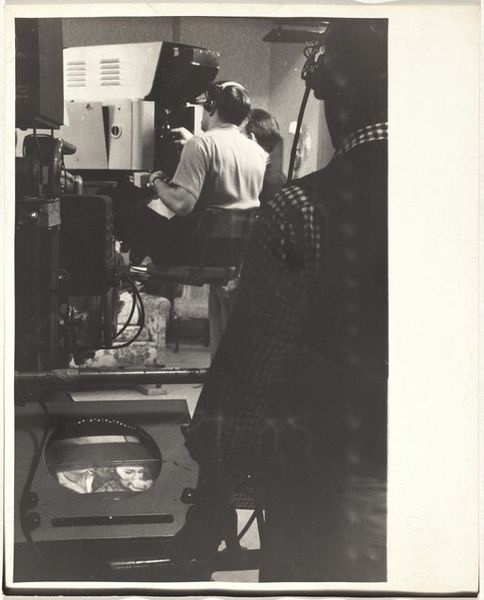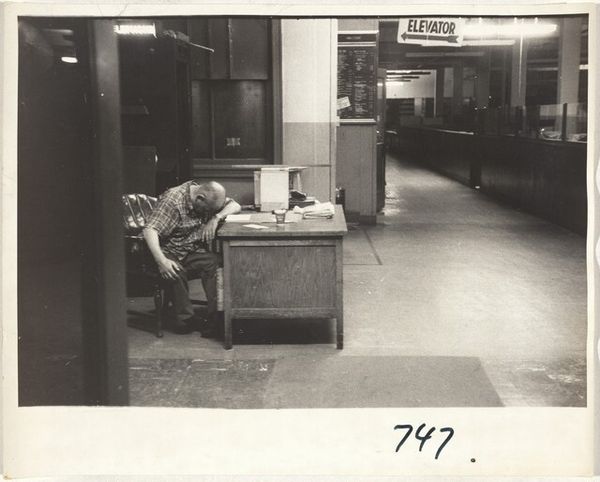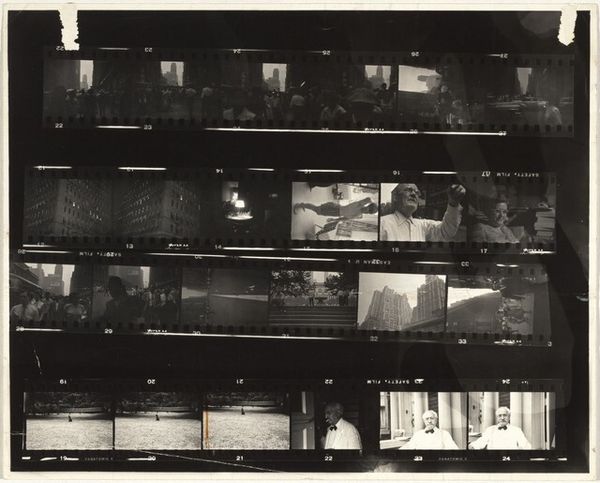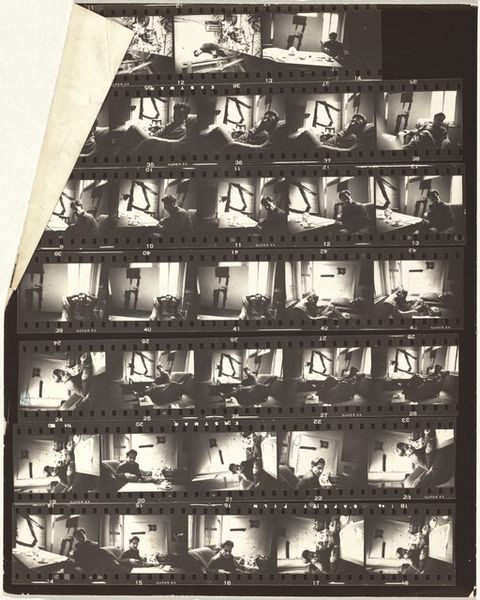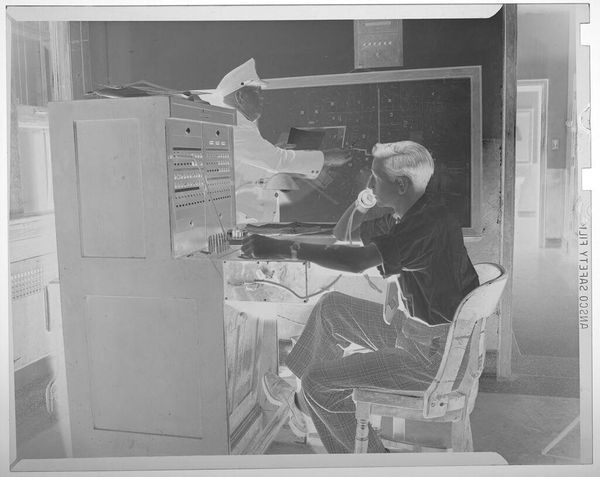
photography, gelatin-silver-print
#
film photography
#
black and white photography
#
landscape
#
street-photography
#
photography
#
gelatin-silver-print
#
monochrome photography
#
monochrome
#
monochrome
Dimensions: image: 21.9 x 32.9 cm (8 5/8 x 12 15/16 in.) sheet: 27.7 x 35.4 cm (10 7/8 x 13 15/16 in.)
Copyright: National Gallery of Art: CC0 1.0
Editor: This is "Sagamore Cafeteria, New York City," a 1955 gelatin silver print by Robert Frank. There's this strong feeling of isolation in the photograph, highlighted by the figure alone in the booth. How would you interpret the significance of the materials used and the context of its creation? Curator: As a materialist, I look at this print as more than just an image; it's a document of material conditions. The gelatin silver print, a mass-produced medium at the time, makes the work accessible, echoing the everyday subject matter. But its apparent simplicity masks a pointed social commentary. What do you notice about the location itself – a cafeteria? Editor: Well, cafeterias are usually associated with communal dining, yet this man is utterly alone. The harsh lighting and stark monochrome add to this sense of alienation. It’s interesting to think about how Frank chose this particular setting. Curator: Precisely! Think about the 1950s – post-war boom, yet Frank highlights this undercurrent of solitude. He uses readily available materials, like the film and photographic paper, to capture something quite profound about American society. The photograph isn't just a reflection; it’s a material artifact shaped by and commenting on its time. What does the specific setting tell you about labor? Editor: That's a great point. The cafeteria worker is obviously absent in the image, or maybe this is before it opens, adding a layer of thinking of the behind-the-scenes aspect of it all. The physical labor needed to maintain such places is deliberately glossed over. I’m starting to see this as a social commentary, not just an aesthetic choice. Curator: Exactly. Frank's work challenges us to see art not as detached from the world, but as deeply embedded in its material and social fabric. The gelatin silver print becomes a vehicle to question what's consumed and what's discarded, both literally and figuratively. Editor: This has shifted my perspective entirely! I'm now considering how the choice of materials actively contributes to the work’s meaning and the artist’s statement. Curator: And hopefully, you'll start looking at all art through that lens, appreciating how materiality and process shape our understanding of the world.
Comments
No comments
Be the first to comment and join the conversation on the ultimate creative platform.
